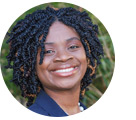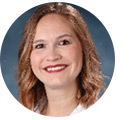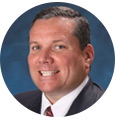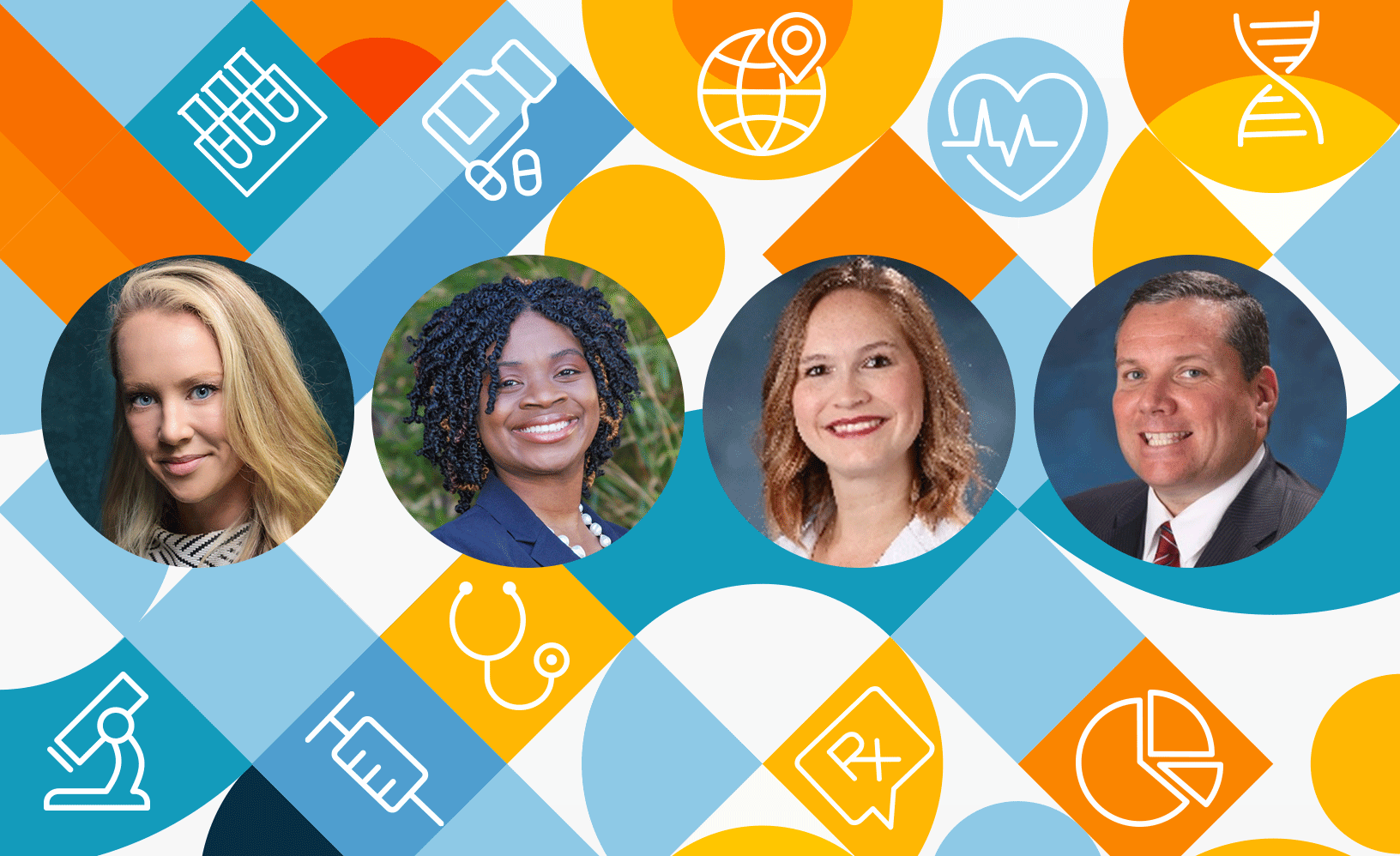




Introduction by Vice Chancellor Goldstein
The three-part mission of UC Irvine Health Affairs – to discover, teach, and heal – is a virtuous cycle that yields continuous quality improvement in research, education, and service. One of our highest priorities is to educate the diverse healthcare workforce of the future to deliver whole-person, data-driven, team-based care.
We innovate in interprofessional education and practice (IPE&P) through a wide array of scenarios so future healthcare professionals from different disciplines can deliver care in teams, each contributing at the top of their license, benefiting patients through their collective expertise.
The rationale for IPE&P is clear – enhancing quality and safety by placing the patient at the center of focus and eliminating outdated hierarchies among providers that contribute to poor communication and suboptimal outcomes – but implementation across the nation has lagged.
All the UCI Health Affairs units, inclusive of the schools in the Susan & Henry Samueli College of Health Sciences, the UCI Centers and Institutes of Health, and our delivery system UCI Health, operate together in an alliance we call ONE HEALTH. To foster collaborations, we are breaking down the silos that separate doctors, nurses, pharmacists, public health experts, allied health providers, and our full time basic, translational and clinical investigators. IPE&P fits perfectly into this world view. Therefore, we see it as essential that our students learn this approach from the beginning of their journey.
At UCI, IPE&P started with medical and nursing students practicing delivery of emergency care in our state-of-the-art simulation center in the School of Medicine more than ten years ago. Now, with the opening of a second trailblazing simulation center located in the new Sue & Bill Gross School of Nursing and Health Sciences Hall, we demonstrate again our commitment to increasing access to IPE&P for all our students, faculty, and staff.
For this first edition of Healthcare Workforce Pathways, we interviewed some of our stellar faculty to shine a light on the innovative work coming out of our simulation centers.
How Interprofessional Education & Practice Paves the Way for Collaborative Care Delivery

Interprofessional Education & Practice (IPE&P) continues to enhance collaboration among healthcare professionals and most importantly, comprehensive and holistic care for patients. Healthcare curriculum in the past has been very siloed. However, with this approach – the cross functional sharing of information and dedication to be collaborative, IPE&P is equipping the professionals of the future to provide better healthcare.
At UCI, we have been at the forefront of IPE&P for many years. For the last ten years the UCI medical and nursing students have been practicing delivery of emergency care in our state-of-the-art simulation center in the School of Medicine. And with the recent opening of a second trailblazing simulation center, located in the new Sue & Bill Gross School of Nursing and Health Sciences Hall, we are able to bolster IPE&P access across the board. The simulation centers (SIM labs) are a space where we can explore different patient scenarios and introduce students to complicated, realistic, hands-on clinical learning experiences. The SIM labs are high-tech, state-of-the-art spaces that provide students with an ultra-realistic environment to walk through their clinical judgment pathways and to explore their critical thinking. UCI students engage in collaborative case studies, small groups, and other activities to simulate a real and truly collaborative medical environment.
Featured in this Q&A
- Dr. Stephanie Au, Assistant Clinical Professor, Sue & Bill Gross School of Nursing
- Dr. Cheryl Wisseh, Assistant Professor of Clinical Pharmacy, Department of Clinical Pharmacy Practice, School of Pharmacy & Pharmaceutical Sciences
- Dr. Alisa Wray, Associate Professor, Clinical Emergency Medicine; Director of Clinical Skills Assessment, School of Medicine
- Dr. Robert McCarron, Director of Education, Susan Samueli Integrative Health Institute
Q: How are the SIM Labs a representation of a successful IPE&P collaboration?
Stephanie Au (Nursing): One of the best ways of learning, in my opinion, is to make a mistake because we learn from those mistakes. But when we’re talking about real patients, real people, real people’s lives, and their health, it is not something that we want to do. We do not want to make mistakes, but mistakes happen. SIM centers provide that safe learning experience where mistakes are OK and where we can have a true meaningful learning opportunity without any negative repercussions whatsoever. When a fatal mistake, for example, is made in the simulation center, it is almost the perfect learning experience because there is no harm done, it is a meaningful learning experience. When we collaborate in the SIM lab we see exactly how our actions have a cause and effect on a patient. ‘If I do this then that happens’ – we walk through that process in a real time setting which is much more meaningful in my opinion than walking through it in a theory discussion.
Alisa Wray (Medicine): I think simulation is an excellent place for interprofessional education and collaboration because in the hospital everything is truly a team sport, and no one can complete their task or take care of patients without everyone else. The SIM labs are an excellent place for medical students, nursing students, and pharmacy students to have the opportunity to work together and start to experience what patient care as a team is like.
Q: How do students looking to pursue your personal profession benefit from a collaboration such as this?
Stephanie Au: A lot of communication breakdowns are not because of a lack of desire to communicate, but rather a misunderstanding of what someone’s role or responsibility was in a given situation. We are opening a door for the students to teach each other at early socialization of their professional role. They will start learning in early education what another person’s role is and what that role means for patient care. That’s really what the students get out of that. How to work together, what their roles are, what their colleagues’ roles are, how they can utilize each other to the best of their abilities. IPE&P is like a building block for students to grow that gets exponentially better!
Robert McCarron (Internal Medicine and Psychiatry): When students learn with each other, I think the learning is more powerful and more sustainable. Additionally, I think that translates into an impact in the community as well.
Alisa Wray: I think medical students really benefit from interprofessional education and collaboration by helping understand everyone’s role and the complex tasks that our nursing colleagues and our pharmacy colleagues are performing in conjunction with what the physicians are doing within the hospital. I think there’s a lot of benefit to learning those communication skills with the other professions early on in your career so that when you are in the hospital or in the clinic, it already feels very natural to have those relationships and to have those conversations and to work together. Learning alongside the nursing students and learning alongside the pharmacy students, the medical students can really start to understand how we can support each other in a true medical setting.
Cheryl Wisseh (Pharmacy): In my experience in pharmacy I find that oftentimes students and even some pharmacists might be a bit intimidated by working with medical students, resident physicians, and attending physicians. This could be due to the overall understanding of how the healthcare system has been socialized in a hierarchy. Having the students learn in this collaborative environment is good because without it communication can be a barrier, and that becomes a threat to patient safety. Interprofessional collaboration tears down this barrier and allows the pharmacy students to not only realize that they’re important members of the team, but also teaches them how to communicate with other members on the team.
Q: What is your hope for the students who are not pursing your personal profession to gain from this collaboration?
Stephanie Au: My goal when we’re working with other students is for them to understand what the nurse’s role is. I know my job, I know what I’m supposed to do, my objectives, what I’m trying to do for my patient. But it’s not ideal if I don’t know what you’re trying to do for the patient or what I can ask of you, or what I can do to help you perform your role better – and that’s really, the golden egg of IPE&P. Everything starts to flourish when we have collaborative understanding. So that’s what I want for the other students. To feel comfortable and confident in teaching others what their role is, and to have a very clear understanding of what my nursing role is for the patient and how they can utilize me too.
Robert McCarron: My profession is internal medicine and psychiatry and when students have different perspectives or experiences from other colleagues in healthcare they’re able to learn in an environment together. I think that experience is unique and powerful. That kind of learning can truly transform healthcare delivery. It is the whole idea behind IPE&P – an innovative approach to collaborate in the area of education, with the ultimate goal of optimization and transformation of healthcare delivery. That for me is the goal. I spend 80% of my time doing interprofessional education these days and in my mind every model we build, every initiative we create together – the final goal should be are we making a quantifiable change in healthcare delivery?
Alisa Wray: Coming from a physician medicine perspective, I’m hoping that the nursing students and the pharmacy students understand this is a team sport. It doesn’t need to be one person who is the head of the team, MVP, or anything like that. I’m hoping that this interprofessional collaboration will help nursing and pharmacy students feel more empowered and comfortable talking with their physician colleagues. To ask questions, collaborate in the clinical / hospital setting. I hope that our medical students would understand that this is a team and that we are all equally weighted in the best interest of the patient.
Q: In the interest of future patients, how do the UCI SIM Labs prepare students for team-based care?
Stephanie Au: One of the ways that SIM Labs prepare for team-based care is unique compared to even other schools that are implementing IPE&P. We are allowing the students to come together to learn in the same room with real life situations and scenarios using actual equipment so that they can physically see what their role is, rather than just having a discussion. A lot of schools are implementing IPE&P, but it has to do with case studies then discussion. What’s different here about the simulation center in the Sue & Bill Gross School of Nursing and Health Sciences Hall is the art that was put into designing the SIM space was made to be very realistic. We have crash carts that are fully set up. We have a medical room that is fully stocked. We have an access station, mobile documentation, scanners, and state-of-the-art mannequins. I think it sets the students up for success because they are practicing exactly what they will and should be doing in a space in the real world.
Alisa Wray: I think communication is key in a lot of ways. When you get into the hospital or in the clinics, you’re working with patient care. Making sure that you can communicate effectively with your team is important because small miscommunications can dramatically impact patient care. The ability to talk with each other, to understand the language that each of the professions uses, and to work collaboratively is imperative for patient safety and patient optimal patient care.
Q: Recognizing that IPE&P is not new, how are the SIM labs creating new experiences for students?
Stephanie Au: IPE&P is not a new concept to clinical practice, and in recent years many efforts in research have prioritized IPE&P. However, IPE&P curriculum design, implementation, and evaluation are cornerstones that are still being examined. I think that UCI is unique because we are really at the forefront of not just dabbling with it. We’re creating a streamline start to finish curriculum that incorporates the core competencies of each profession, targeting each one. We have nursing, medicine, and pharmacy, which are obviously some of the most common but then with our integration of integrative health, public health, culinary specialties, those truly unique professions. I haven’t seen that done in many places.
Alisa Wray: Looking at what we’ve been doing at the School of Medicine – pulling nursing, pharmacy, and medical students to work together on code situations – we call it critical team incident training. I think moving forward with the nursing SIM lab, some things that we’ve potentially talked about are increasing our interprofessional simulation sessions. Instead of just doing code interprofessional sessions, doing more sessions with standard patient cases, both in the clinic and in more acute settings like in the hospital, in the emergency department, on the floor, in the ICU.
Cheryl Wisseh: Being able to learn together based on where the students are, to have these different experiences, our hope is that they will be able to see healthcare from different perspectives. There’s a lot of opportunity there to build out a full and robust preclinical curriculum which is what the SIM allows us to do and to open communication pathways.
Q: What is your hope that these students will bring to the next generation of healthcare professionals?
Stephanie Au: My hope is that students will become leaders in interprofessional practice through modeling collaborative teamwork and effective communication skills. Specifically, when there are varying points of views and perspectives. We don’t all have to agree, but being able to have a productive discussion is how we can help healthcare delivery flourish and improve patient outcomes. It can feel very uncomfortable to disagree with a colleague, and while developing excellent communication and collaborations are essential, they take practice. These IPE&P experiences will hopefully offer the students the opportunity to learn these skills, so they can be leaders role modeling how interprofessional collaboration can positively impact clinical practice. That’s what I want for our students.
Alisa Wray: My hope is that everything will become more collaborative within our professions and for our patients. Medicine has a history of being very paternalistic in terms of the healthcare providers telling patients what to do instead of having an open dialogue and having conversations with our patients about what their goals are and what they’re looking for. I’m hoping that by increasing the communication and the collaboration within pharmacy, nursing, social work, public health, and medicine that we will create or foster this idea of incorporating what everyone would like to have done and incorporating everyone’s hopes and wishes.
Cheryl Wisseh: The value that there is in humility. All the different health professions go to school for a number of years, and we’re told all these things and we learn evidence-based practice. When a patient comes in front of you, you always have to approach it with humility. I think there’s a lot of humility in working within an interprofessional team and collaborating with other professions because it’s OK to be able to admit, I don’t know. You might be able to see it from a different perspective, get different resources by working with a team. I think being humble but also facing the patient, that’s something I hope they can have and that they can pass to the next generation of health professionals.
Q: What activities in the SIM labs have proven to be the most eye opening for students outside of your profession and within your profession.
Stephanie Au: Hands down, the students absolutely love the high-fidelity simulations. We do a lot of different things – community clinic work, expert panels, case studies, discussions, and integration – but the students really love high-fidelity real-life scenario experiences.